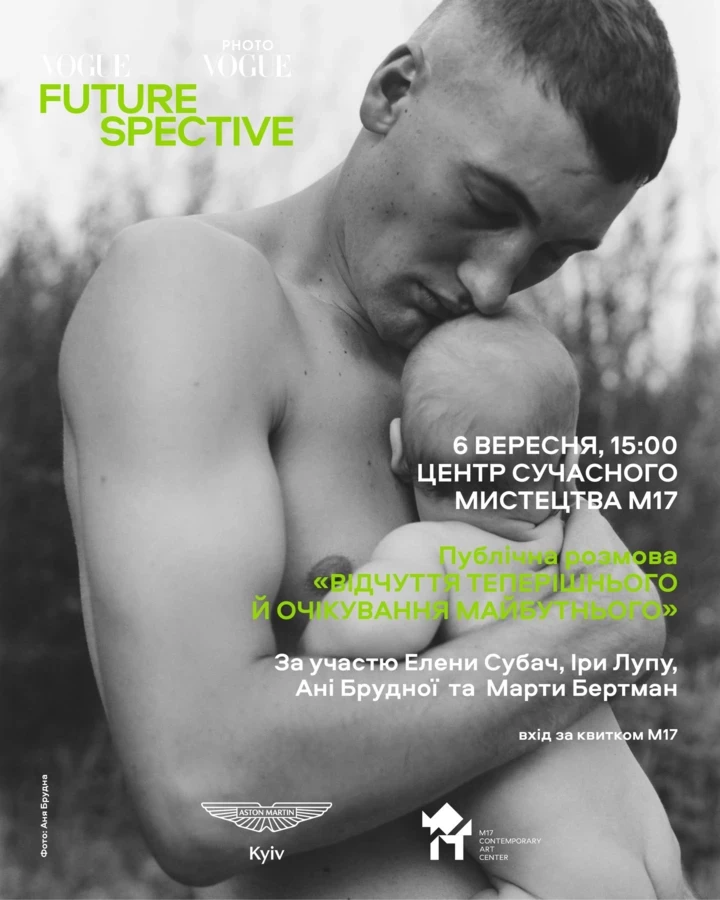
Save this storySave this storySave this storySave this story
This past July, Sinna Nasseri was commissioned by The New Yorker to photograph the Republican National Convention, in Milwaukee. It was the sort of assignment he had undertaken before—in the past few years, he’s shot, among other political events, the 2020 New Hampshire Democratic primary and the January 6th hearings in the House of Representatives—and the resulting pictures, published on this Web site, were marked by the off-kilter sensibility that has become his signature. In the pictures, an elderly Wyoming delegate wearing a Trump-branded cowboy hat sits by a mirrored wall, his mouth open in a wide yawn, while a cowboy-booted female delegate raises her skinny arms in adulation; a smiling boy trots down a convention corridor past a poster of Donald Trump’s glaring mug shot captioned with a reminder to “Never Surrender”; a woman in a red bedazzled cap takes a closeup with her iPhone of J. D. Vance’s smiling face as it appears on a TV screen. Nasseri’s photographs of the R.N.C. highlighted not whatever pomp and circumstance he could find in the occasion but, rather, moments he spotted on its margins. Even when key Republican figures such as the former President or his V.P. pick were featured, they appeared not as lead actors but as ghostly traces, marking the lives of the figures they affect.

New Orleans, Louisiana.
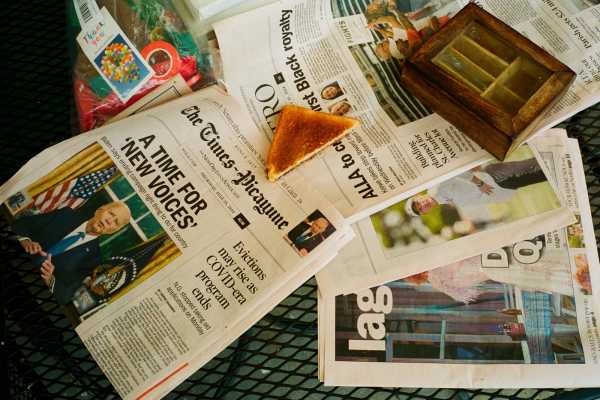
New Orleans, Louisiana.
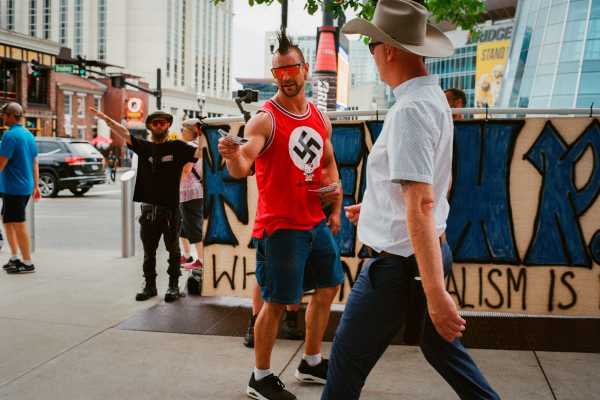
Nashville, Tennessee.
For Nasseri, politics are, first and foremost, about people—their faces, their gestures, their often mundane interactions and environments—and he’s interested in exploring this theme even when not on explicitly newsy assignments. Luckily, the R.N.C. provided opportunities for additional discovery: instead of flying to the Convention, Nasseri decided to drive from Los Angeles to Milwaukee and back, spending three weeks on the road capturing what he encountered in some seventeen states. “I wanted to see how we live as Americans in the shadow of the Presidential election,” he told me recently.
This was not Nasseri’s first time going on the road. A lawyer who made the transition to professional photography around 2020, he first began exploring this very American mode of travel after the pandemic prompted a radical reshuffling of daily life. “COVID had taken over, everyone was stuck at home, and I decided to kind of drop everything and go out and document the country,” he said. In the period leading up to that year’s election, Nasseri took two months-long road trips—one to a Trump rally in Tulsa, Oklahoma, in June, and the other to a biker rally in Sturgis, North Dakota, later that summer. He wanted to “visit places that were underseen, where not a lot of people were going,” he told me. In the shorter trip he took earlier this year, to Milwaukee and back, he chose to revisit many of the places he had encountered four years ago.
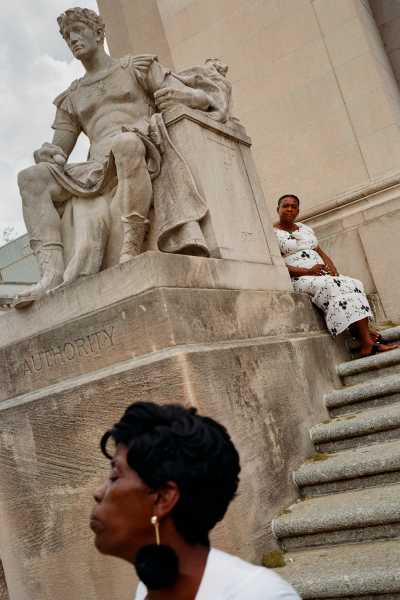
Memphis, Tennessee.
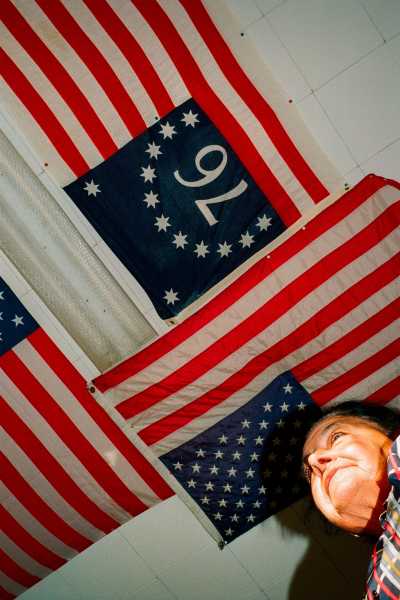
Near Buffalo, Wyoming.
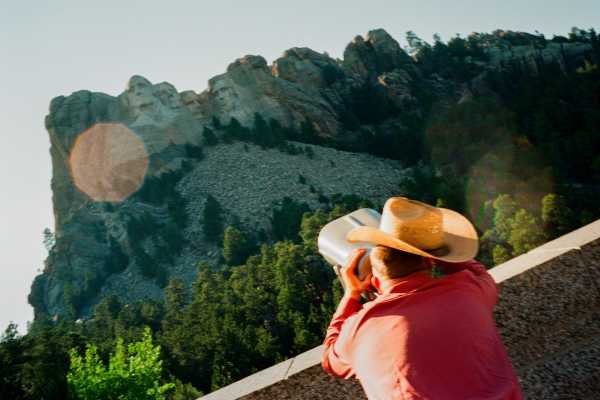
Mt. Rushmore, Keystone, South Dakota.
As I spoke with Nasseri about his project, I was reminded of Michael Apted’s “Up” series, in which, beginning in 1964, the British filmmaker documented the same group of people in seven-year intervals, starting when they were around seven years old. (The most recent installment, “63 Up,” was released in 2019.) Apted’s intention was to examine not just the individual lives of the subjects he chose to follow but also the broader social, cultural, and political environment that those subjects matured in, turning “Up” into an ongoing portrait of contemporary England in the late twentieth and early twenty-first centuries. Nasseri, returning to some of the same locations he captured in 2020, approached his own undertaking as a kind of temperature-taking mission on the subject of America, and the country he found this time around felt very different from the one he travelled four years prior. “During the 2020 trips I took, the pandemic was happening, George Floyd had just happened, there was a lot of activism from both the left and the right on the question of Confederate monuments,” he said. “Trump was still President, and politics was the first thing people wanted to talk about. On this trip, there wasn’t much political activity at all. It was very muted.”

Sturgis, South Dakota.
As an immigrant who has adopted America as my home, I’ve often sensed that this is a country whose ideal state is a politics-free utopia, animated by a kind of hands-off individualism, which, as Alexis de Tocqueville presciently noted in the mid-nineteenth century, inclines “each member of the community to sever himself from the mass of his fellow-creatures; and to draw apart with his family and his friends; so that, after he has thus formed a little circle of his own, he willingly leaves society at large to itself.” Such rejection of the public sphere is, however, a political stance, too. Politics don’t just crop up in protest banners and slogans, in convention halls or in town squares; sometimes they reveal themselves by their overt absence.

Ten Sleep, Wyoming.

Chicago, Illinois.

South Dakota.
COVID, the Black Lives Matter protests, and the existential battle for the soul of the Republic impelled by the Trump Presidency made 2020 a capital-P political year. But when Nasseri embarked on his road trip, in early July, Joe Biden had still not pulled out of the Presidential race, and the country was in stasis. Places that Nasseri had experienced previously as hotbeds of agitation were now sleepy, as if forgotten. In a picture he took in Minneapolis, near the site of George Floyd’s murder, we see a little girl on a blue bicycle riding past the “Say Their Names” memorial art installation—rows of headstones put up in June of 2020 to commemorate Black lives lost to police brutality. “When I visited the city four years ago, activists had blocked off the area, and wouldn’t allow police or government to come in. It was basically a semi-autonomous zone,” Nasseri told me. Now the scene was quiet, unremarkable. One would not be faulted, perhaps, for passing the cemetery and not giving it a second glance. The grass was growing.
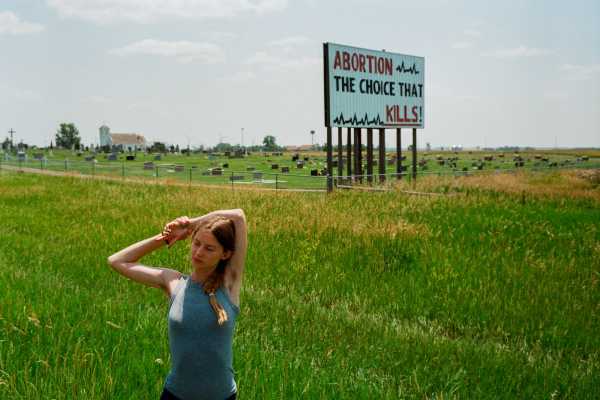
South Dakota.
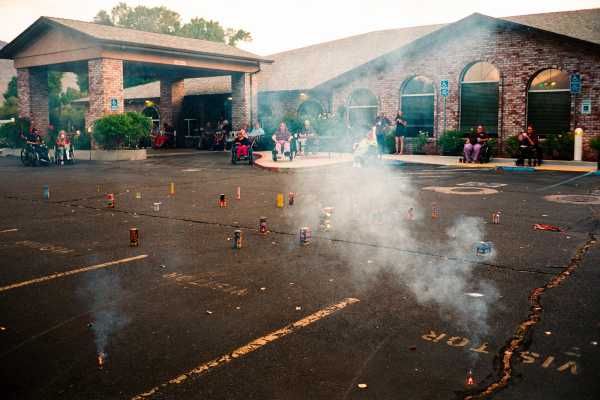
Bishop, California.
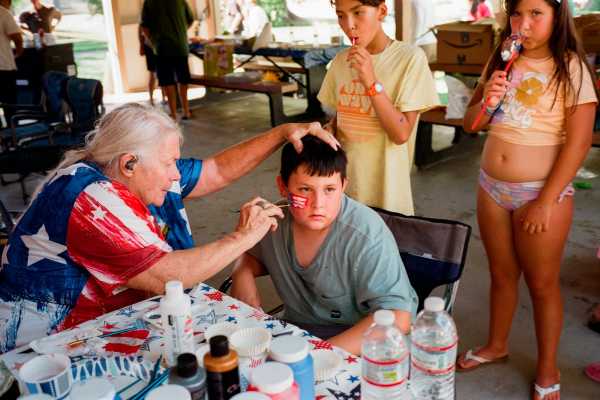
Bishop, California.
The grass has grown, too, in New Orleans—so much so that in one of Nasseri’s photographs the bottom of a welcome sign by the side of a thoroughfare is obscured by it. “Welcome to”—where? New Orleans, a city nearly obliterated almost two decades ago by the rising waters of Katrina, could now be Anytown, U.S.A., just another nondescript, overlooked place on the map. In a picture that Nasseri captured in Gillette, Wyoming, we see a man hanging half out the window of a white Chevy, a firearm at his shoulder aimed at seemingly nothing, as the car speeds down a dirt road. “Gillette is a town built on coal mining. You see people in bars, coming off a shift with ash on their face,” Nasseri said.
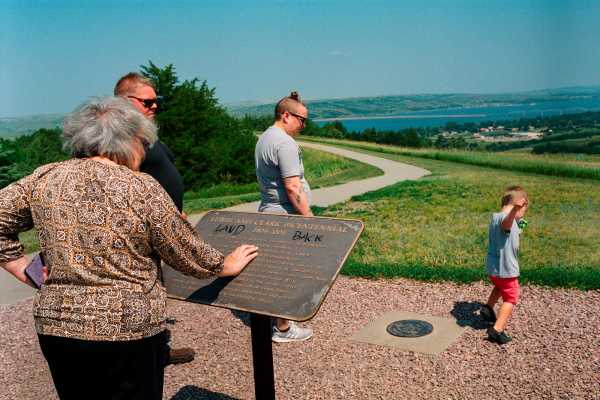
South Dakota.
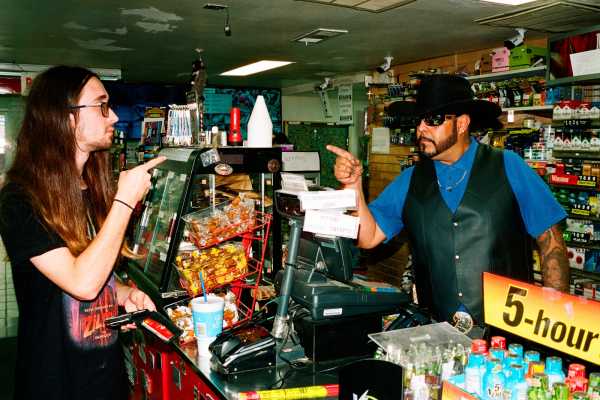
New Mexico.
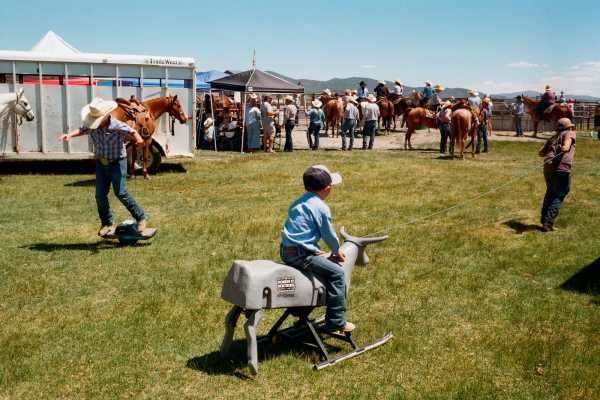
Bridgeport, California.
Nasseri’s words reminded me of a moment in Sean Baker’s 2021 movie, “Red Rocket,” in which the weed-dealer protagonist, played by Simon Rex, is told that the oil-refinery workers who live in his small Texas city could become his most loyal customers, because “at the end of their shift . . . they want to kill themselves” and are ready for some relief. (Or, as the hair-metal band Poison sang in their 1988 hit “Nothin’ but a Good Time,” “I’m always workin’, slavin’, every day / Gotta get a break from the same old same old / I need a chance to just get away / If you could hear me think, this is what I’d say.”) The hunger for a good old American time is evident in several other photographs in Nasseri’s series. In one picture, taken at a bar in Chicago, we see three tan, blond women, all dressed in shades of white and gold, their faces flushed from drinking and dancing; in another picture, at a bar in Houma, Louisiana, a woman in Daisy Dukes twirls on a stripper pole. This image, however, also contains a more unsettling thrum: nearby, a life-size cutout of Trump leans against a wall, side by side with an American-flag-adorned plastic skeleton.
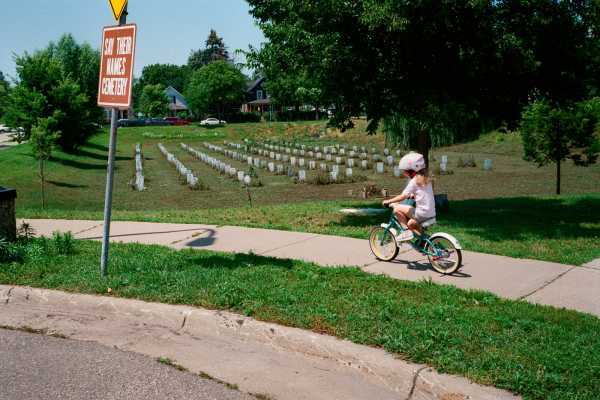
Minneapolis, Minnesota.
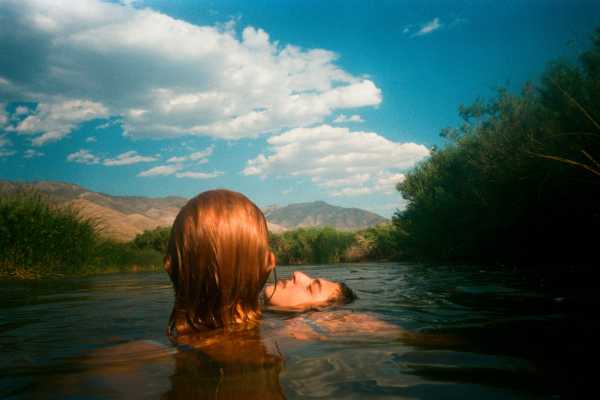
Bishop, California.
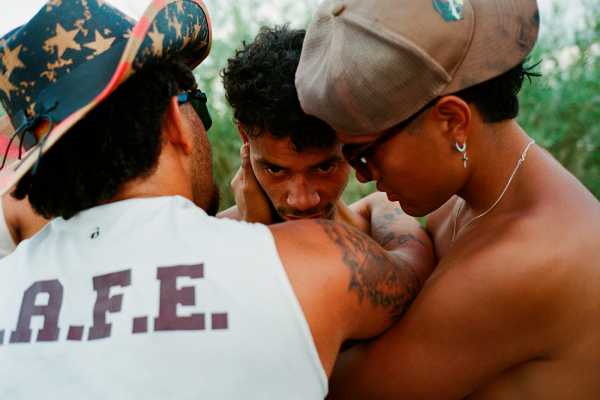
Bishop, California.
A feeling of impending doom hovers over many of Nasseri’s pictures. On the first day of the road trip, which happened to fall on the Fourth of July, Nasseri and a friend arrived in Bishop, California, a small city in the Eastern Sierra. “We first went to a watermelon-eating contest, real American small-town stuff, and then we found these springs in the middle of the mountains,” Nasseri told me. “It was absolutely stunning, and everyone was just hanging out, blasting music, drinking beers, in good spirits.” One image in the series captures the deep release of the springs: a young woman in the water with her back to the camera, her hair wet and slick down her back, while her male companion dunks his head back, only his face visible, upturned to the sky above. But if in one moment all was calm, in the next everything changed. “All of a sudden, I’m not sure what precipitated it, but this giant brawl broke out,” Nasseri said. “Punches were flying, women were pulling each other’s hair, dust everywhere, a couple of people were lying bloodied on the ground. The party was over.” In another image, taken after the fight broke out, two young men appear to hold back a third one, who is facing the camera, staring blankly ahead. We can’t tell what he’s looking at, but we can be pretty sure that it’s nothing good. In a photograph taken later in the trip, in Nashville, on the way back from the R.N.C., we see a group of neo-Nazis handing out flyers in broad daylight. “When I captured that, I realized that extremism never went away,” Nasseri told me. “It was there, simmering all along.”
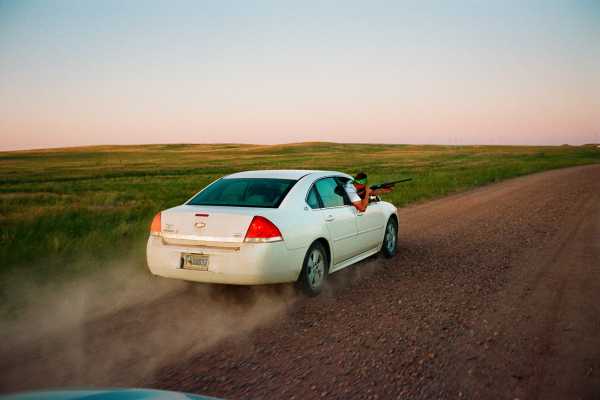
Gillette, Wyoming.
Sourse: newyorker.com


